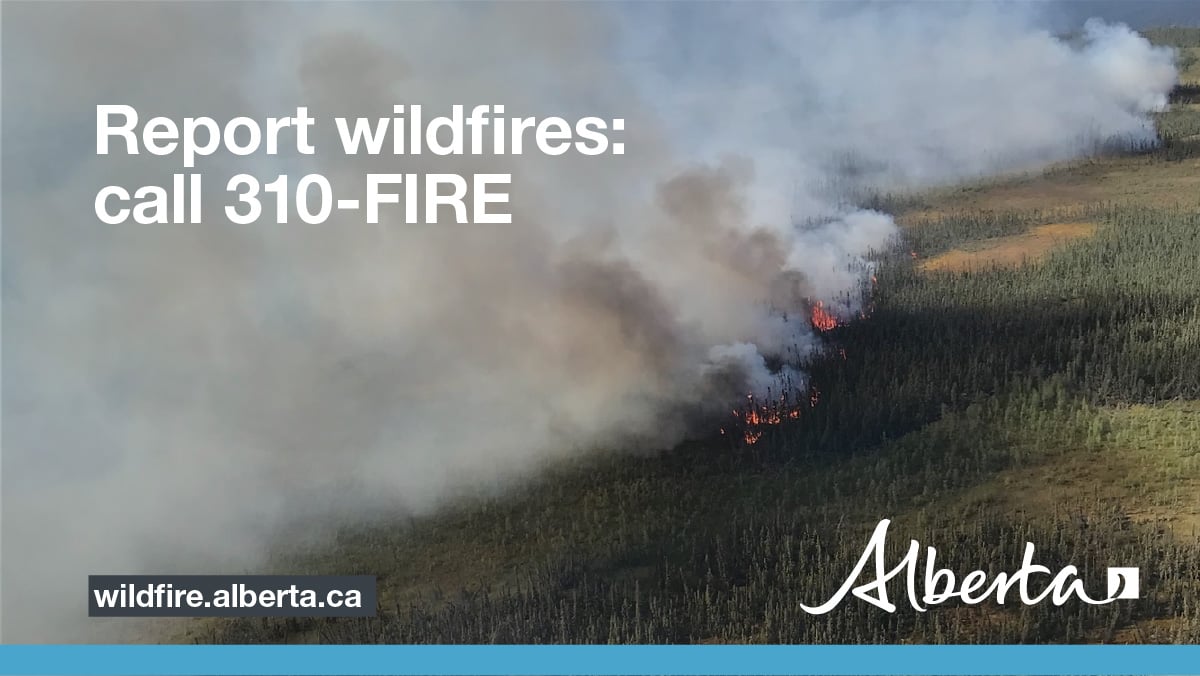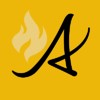
The wildfire danger level is VERY HIGH for the Fort McMurray Forest Area.
As of today at 9:00 AM, a fire advisory has been implemented for the Fort McMurray Forest Area. See details below.
To see where smoke is coming from, visit FireSmoke Canada.
On average, 67 per cent of wildfires are caused by humans. Everyone plays a role in preventing wildfires. Take the wildfire pledge to reduce wildfires and enter to win a helicopter tour!

Due to the current and forecasted Fire Weather Indices, today at 9:00 AM the Fort McMurray Forest Area will be under a fire advisory. Under this advisory no new fire permits will be issued until conditions improve. All existing permits remain valid; however, renewals will be evaluated on a case by case basis. Safe wood campfires are not affected by this advisory.
Allowed:
- Safe wood campfires *
- Backyard fire pits
- Portable propane fire pits
- Gas or propane stoves and barbecues
- Catalytic or infrared-style heaters
*Safe wood campfires - should be within a metal, brick, or rock fire ring. They are required to:
a) Be on rock, gravel, sand, or another non-combustible surface that extends at least one meter around the fire.b) Have a responsible person in attendance to keep the fire under control at all times and to extinguish before leaving.
c) Have on hand enough water on site to extinguish the fire. Safe wood campfires on private lands include private land campgrounds and private land recreation areas; and
d) Municipalities, Parks, and protected areas may have additional fire safety requirements.
The fire advisory will remain in effect until conditions improve.
MCX002 - Cattail Complex
Wildfires MWF047, MWF077, and MWF079 are part of the Cattail Lake Complex. All three wildfires were caused by lightning and are now classified as being held. The classification of being held means that given current weather conditions and resources, the wildfire is not anticipated to grow past expected boundaries.
MWF047 is 105,900 ha in size and is located 53 km east of Fort McKay, 68 km northeast of Fort McMurray, and 6 km northeast of local industrial facilities.
MWF077 is 17,765 ha in size and 38 km northeast of Fort McMurray, 46 km from Fort McKay, and 6.5 km from local industrial facilities.
MWF079 is 515 ha in size and is located near the Saskatchewan border. At this time, aircraft are monitoring this wildfire.
MCX003 - Algar Lake Complex
Wildfires MWF069, MWF086, and LWF165 make up the Algar Complex. All three of these wildfires are classified as under control. The classification of under control means that the wildfire is completely contained and will be extinguished.
MWF069 is located 10 km west of Highway 63 and 40 km southwest of Fort McMurray and is 17,183 ha in size.
MWF086 is located 37 km southwest of Fort McMurray and is 2,251 ha in size.
LWF165 is located 20 km south of Crow Lake and is 1,166 ha in size.
MCX004 - Rabbit Lake Complex
Wildfires MWF060, MWF074, and MWF078 are classified as being held. The classification of being held means that given current weather conditions and resources, the wildfire is not anticipated to grow past expected boundaries.
MWF060 is located about 36 km northeast of Chipewyan Lake. It is estimated to be 20,219 ha in size. This wildfire was caused by lightning.
MWF074 is located northeast of MWF060. It is 297 ha in size and was caused by lightning.
MWF078 is located about 25 km east of Chipewyan Lake. It is 2,635 ha in size.
FORT MCMURRAY FOREST AREA WILDFIRE UPDATE
There are currently 18 active wildfires in the Fort McMurray Forest Area. Currently, 14 are being held, and four are under control.
Since January 1, 2024, 92 wildfires have burned approximately 245,216 hectares (ha) in the Fort McMurray Forest Area.
MWF045 was discovered on July 2 and is approximately 23 km south of the Wood Buffalo National Park border. It is classified as being held and is estimated to be 2,300 ha in size. This wildfire was caused by lightning.
MWF056 was discovered on July 3 and is located approximately 41 km north of the Cattail Complex (MCX002). It is classified as being held and is estimated to be 400 ha in size. This wildfire was caused by lightning.
MWF061 was discovered on July 7. It is approximately 110 km northeast of Fort McKay and 13 km from the Birch Mountain Wildland Provincial Park. It is classified as being held and is estimated to be 40 ha in size. This wildfire was caused by lightning.
MWF063 was discovered on July 9 and is 60 km southwest of Camsell Portage (Saskatchewan) and 65 km northeast of Fort Chipewyan. It is classified as being held at 11,476 ha in size. This wildfire was caused by lightning.
MWF064 was discovered on July 9 and is located on Bustard Island, approximately 2 km northwest of the Bushland Island remote forest recreational reserve. The island is 23 km northeast of Fort Chipewyan. It is classified as being held and is estimated to be 3.9 ha in size. The cause of this wildfire is under investigation.
MWF068 was discovered on July 10 and is located approximately 4.5 km east of the High Level Forest Area border and 13 km north of the Slave Lake Forest Area border. It is classified as being held and is estimated to be 100 ha in size. This wildfire was caused by lightning.
MWF080 was discovered on July 14 and is located in the area between Gipsy Lake, Garson Lake and the Alberta/Saskatchewan border. It is classified as being held and is estimated to be 3,570 ha in size. This wildfire was caused by lightning.
MWF081 was discovered on July 16. It is located on Burntwood Island, 39 km northeast of Fort Chipewyan. It is classified as being held and is estimated to be 779 ha in size. This wildfire was caused by lightning.
MWF091 was discovered on July 25. It is located 10 km southwest of Fort McMurray and 27 km west of Gregorie Lake Estates. It is classified as under control and estimated to be 2 ha. 12 firefighters, supported by two helicopters, are working on this wildfire. This wildfire was caused by lightning.
MWF043 was discovered on July 3 and is approximately 22 km northwest of Bitumount. It is classified as under control and is estimated to be 900 ha. This wildfire was caused by lightning.

See the latest fire danger maps.

If you see smoke in the forest, always be sure to call 310-FIRE to report it.
You can now call right from the Alberta Wildfire app. Download for Apple or Android today!
.png?width=1201&height=629&name=WF_Social-images%20(8).png)
When you're done with your campfire, always remember to soak it, stir it and soak it again.
- Let the fire burn down before you plan on putting it out. Spread the embers within the fire pit, then add water or loose dirt, and stir.
- Expose any material still burning. Add more water and stir again until you can no longer see smoke or steam. Do not bury your fire as the embers may continue to smoulder and can re-emerge as a wildfire.
- Repeat until your campfire is cool to the touch.
- If your fire is out, you should not be able to feel any heat from the ashes.

OHV SAFETY
Always be cautious when recreating outdoors.
Off-highway vehicles (OHVs) have exhaust systems that get hotter than 200°C. At these temperatures, built-up materials (such as grass, muskeg, moss, or other debris) can heat up, smoulder and ignite.
These can fall to the ground as you are riding, starting a wildfire.
See OHV safety tips.
CONTACT:

RELATED INFORMATION
- Alberta Wildfire
- Alberta Fire Bans
- FireSmart in Alberta
- Alberta Emergency Alerts
- Air Quality Health Index
- Wildfire Smoke and Your Health
- 511 Road Reports
- Emergency Preparation
Join the conversation on
DOWNLOAD OUR APPS
Alberta Wildfire App for Apple or Android and Alberta Fire Bans App for Apple or Android.
